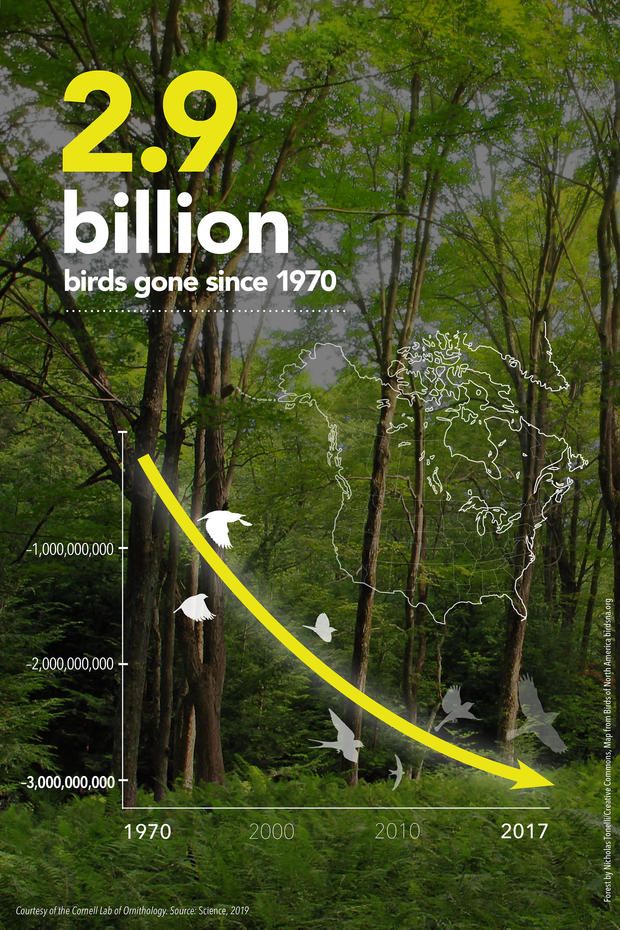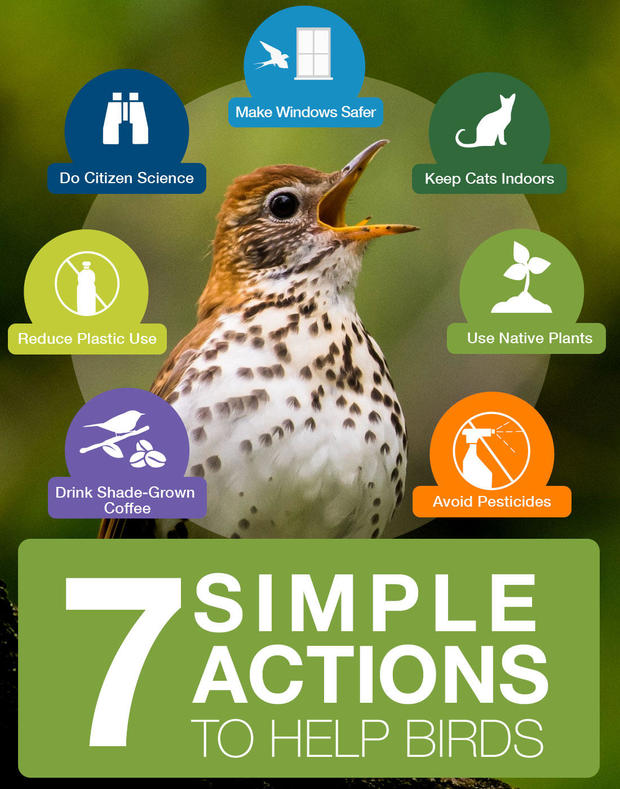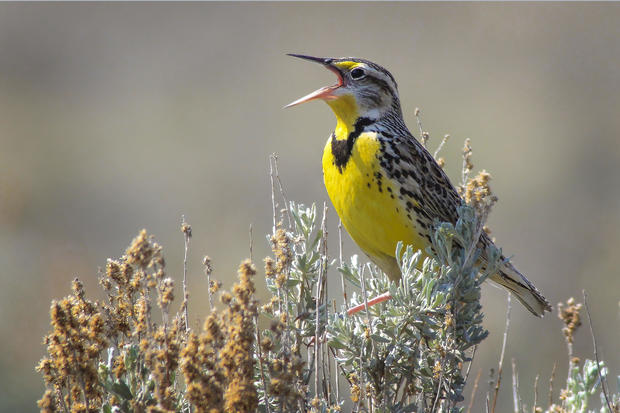North America has lost nearly 3 billion birds since 1970
Over the last 50 years, the U.S. and Canada have slowly but surely lost 29% of their bird populations — amounting to nearly 3 billion birds. The shocking loss could be a sign of an ecological crisis, scientists said Thursday.
According to a new study published in the journal Science by top ornithologists and government agencies, even common birds such as sparrows and blackbirds have faced declines in North America since 1970.
"It's staggering," said lead author Ken Rosenberg, a conservation scientist at the Cornell University Laboratory of Ornithology.
Researchers studied 529 bird species over the last half-century to compile the most comprehensive study ever done on North American birds, the journal said. Thanks to the decades of monitoring by researchers and bird enthusiasts across the continent — as well as weather radars — scientists had a huge amount of data to work with.
What they found was unexpected. While scientists believed rarer species would be declining, they assumed more common species would be on the rise due to their resilience as well as conservation efforts. But the declines have far outweighed the gains.
"We expected to see continuing declines of threatened species," Rosenberg said. "But for the first time, the results also showed pervasive losses among common birds across all habitats, including backyard birds."
Grassland birds such as meadowlarks and northern bobwhites have declined by 53% since 1970 — a loss of 700 million adults in the 31 species studied. Shorebirds such as sanderlings and plovers are down by about one-third, according to the study.
"There's an erosion of the numbers of common birds," Rosenberg said. Indeed, 19 common species have lost more than 50 million birds in the last 50 years. Birds such as sparrows, warblers, finches and blackbirds have been hit particularly hard, the study found.
"When you lose a common species, the impact will be much more massive on the ecosystem and ecosystem services," said Gerardo Ceballos, an ecologist and conservation biologist at the National Autonomous University of Mexico in Mexico City. "It's showing the magnitude of the problem."
Between 2007 and 2017, the mass of birds migrating in the spring has dropped 13%, with the greatest decline in birds migrating up the eastern United States. "We want this to be the real wake-up call," Rosenberg said.
While not all of the factors for the mass decline have been pinpointed, researchers say habitat loss is a major concern. Pesticide use, climate change and predators could also be contributing to the decline.
"This is being caused entirely by humans. Habitat loss, which is the primary driver here, is a human-caused issue," said the study's co-author Peter Marra, director of the Georgetown Environment Initiative.
Birds are indicator species, acting as a measurement for overall environmental health. Scientists fear the decline signals a major crisis, since birds play a part in controlling the spread of plants and insects.
"It's imperative to address immediate and ongoing threats, both because the domino effects can lead to the decay of ecosystems that humans depend on for our own health and livelihoods — and because people all over the world cherish birds in their own right," Marra said. "Can you imagine a world without birdsong?"
According to a comprehensive U.N. report published in May, one million species of plants and animals are currently at risk of extinction. More than half a million species on land "have insufficient habitat for long-term survival" and are likely to go extinct, many within decades, unless their habitats are restored.
Fighting climate change and saving species are equally important, the report said.
The new study did find a few species of birds that have rebounded from decline and started to thrive. Waterfowl such as ducks, geese and swans and raptors such as bald eagles have made significant recoveries thanks to government funding and protection efforts.
If nothing else, scientists hope the concerning statistics will encourage people to pay more attention to birds. "It might stir needed action in light of the public interest in our feathered friends," Stanford University ecologist Paul Ehrlich said.
According to the American Bird Conservancy, strengthening protections for birds at the government level may be the best way to protect them. Defending and strengthening the Migratory Bird Treaty Act, increasing funding for programs to protect habitats, enacting the Recovering America's Wildlife Act and advancing climate solutions may help reverse the decline.
"The story is not over," said co-author Michael Parr, president of American Bird Conservancy. "There are so many ways to help save birds. Some require policy decisions such as strengthening the Migratory Bird Treaty Act. We can also work to ban harmful pesticides and properly fund effective bird conservation programs. Each of us can make a difference with everyday actions that together can save the lives of millions of birds — actions like making windows safer for birds, keeping cats indoors, and protecting habitat."







